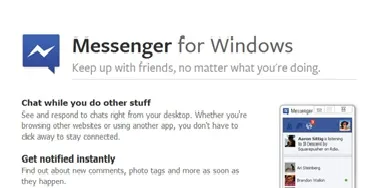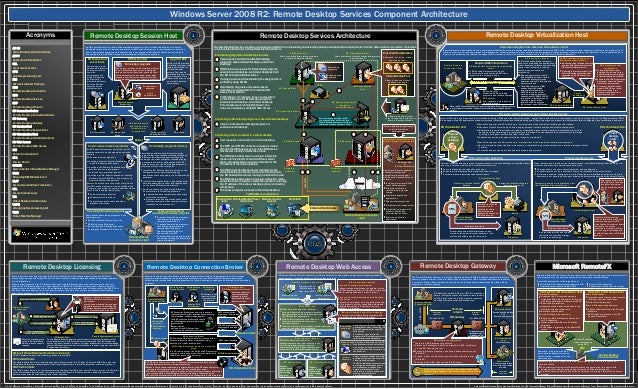A simple app that lets you text, video chat, and stay close with people you care about. Tap on the three vertical dots on the upper right corner and then tap on “View Desktop Site.” Once the full site has loaded, avoid tapping on the Facebook logo on the top-left corner and also avoid tapping on YOUR profile name because if you do it will detect that you’re on a mobile browser and direct you to the web app (touch.facebook.com).
- Facebook Desktop Site Login 2012 Version
- Facebook Desktop Log In Site
- Facebook Full Desktop Site
- Facebook Desktop Site Link
Applies To: Windows Vista, Windows Server 2008, Windows 7, Windows 8.1, Windows Server 2008 R2, Windows Server 2012 R2, Windows Server 2012, Windows 8
This security policy reference topic for the IT professional describes the best practices, location, values, policy management, and security considerations for this policy setting.
Reference
This policy setting determines which users can start an interactive session on the computer. Users must have this user right to log on over a Remote Desktop Services or Terminal Services session that is running on a Windows-based member computer or domain controller.
Note
Users who do not have this right are still able to start a remote interactive session on the computer if they have the Allow logon through Remote Desktop Services right.
This policy setting is supported on versions of Windows that are designated in the Applies To list at the beginning of this topic.
Constant: SeInteractiveLogonRight
Possible values
User-defined list of accounts
Not Defined
By default, the members of the following groups have this right on workstations and servers:

Administrators
Backup Operators
Users
By default, the members of the following groups have this right on domain controllers:
Account Operators
Administrators
Backup Operators
Print Operators
Server Operators
Facebook Desktop Site Login 2012 Version
Best practices
Restrict this user right to legitimate users who must log on to the console of the computer.
If you selectively remove default groups, you can limit the abilities of users who are assigned to specific administrative roles in your organization.
Location
GPO_nameComputer ConfigurationWindows SettingsSecurity SettingsLocal PoliciesUser Rights Assignment
Default values
The following table lists the actual and effective default policy values for the most recent supported versions of Windows. Default values are also listed on the policy’s property page.
Server type or GPO | Default value |
|---|---|
Default Domain Policy | Not Defined |
Default Domain Controller Policy | Account Operators Administrators Backup Operators Print Operators Server Operators |
Stand-Alone Server Default Settings | Administrators Backup Operators Users |
Domain Controller Effective Default Settings | Account Operators Administrators Backup Operators Print Operators Server Operators |
Member Server Effective Default Settings | Administrators Backup Operators Users |
Client Computer Effective Default Settings | Administrators Backup Operators Users |
Operating system version differences
There are no differences in the way this policy setting works between the supported on versions of Windows that are designated in the Applies To list at the beginning of this topic. Remote Desktop Services was formerly known as Terminal Services.
Policy management
Restarting the computer is not required to implement this change.
Any change to the user rights assignment for an account becomes effective the next time the owner of the account logs on.
Modifying this setting might affect compatibility with clients, services, and applications. Use caution when removing service accounts that are used by components and by programs on member computers and on domain controllers in the domain from the default domain controller's policy. Also use caution when removing users or security groups that log on to the console of member computers in the domain, or removing service accounts that are defined in the local Security Accounts Manager (SAM) database of member computers or of workgroup computers.
If you want to grant a user account the ability to log on locally to a domain controller, you must make that user a member of a group that already has the Allowed logon locally system right or grant the right to that user account.
The domain controllers in the domain share the Default Domain Controllers Group Policy Object (GPO). When you grant an account the Allow logon locally right, you are allowing that account to log on locally to all domain controllers in the domain.
Facebook Desktop Log In Site
If the Users group is listed in the Allow log on locally setting for a GPO, all domain users can log on locally. The Users built-in group contains Domain Users as a member.
Group Policy
Group Policy settings are applied through GPOs in the following order, which will overwrite settings on the local computer at the next Group Policy update:
Local policy settings
Site policy settings
Domain policy settings
OU policy settings
Security considerations
This section describes how an attacker might exploit a feature or its configuration, how to implement the countermeasure, and the possible negative consequences of countermeasure implementation.

Vulnerability
Any account with the Allow log on locally user right can log on to the console of the computer. If you do not restrict this user right to legitimate users who must log on to the console of the computer, unauthorized users could download and run malicious software to elevate their privileges.
Countermeasure
For domain controllers, assign the Allow log on locally user right only to the Administrators group. For other server roles, you may choose to add Backup Operators in addition to Administrators. For end-user computers, you should also assign this right to the Users group.
Alternatively, you can assign groups such as Account Operators, Server Operators, and Guests to the Deny log on locally user right.
Potential impact
If you remove these default groups, you could limit the abilities of users who are assigned to specific administrative roles in your environment. If you have installed optional components such as ASP.NET or IIS, you may need to assign the Allow log on locally user right to additional accounts that are required by those components. IIS requires that this user right be assigned to the IUSR_<ComputerName> account. You should confirm that delegated activities are not adversely affected by any changes that you make to the Allow log on locally user rights assignments.
See Also
 -->
-->Applies To: Windows Vista, Windows Server 2008, Windows 7, Windows 8.1, Windows Server 2008 R2, Windows Server 2012 R2, Windows Server 2012, Windows 8
This security policy reference topic for the IT professional describes the best practices, location, values, policy management, and security considerations for this policy setting.
Reference
This policy setting determines which users are prevented from logging on directly at the computer's console.
This policy setting is supported on versions of Windows that are designated in the Applies To list at the beginning of this topic.
Constant: SeDenyInteractiveLogonRight
Possible values
User-defined list of accounts
Not defined
Best practices
Assign the Deny log on locally user right to the local guest account to restrict access by potentially unauthorized users.
Test your modifications to this policy setting in conjunction with the Allow log on locally policy setting to determine if the user account is subject to both policies.
Location
GPO_nameComputer ConfigurationWindows SettingsSecurity SettingsLocal PoliciesUser Rights Assignment
Default values
The following table lists the actual and effective default policy values for the most recent supported versions of Windows. Default values are also listed on the policy’s property page.
Server type or GPO | Default value |
|---|---|
Default Domain Policy | Not defined |
Default Domain Controller Policy | Not defined |
Stand-Alone Server Default Settings | Not defined |
Domain Controller Effective Default Settings | Not defined |
Member Server Effective Default Settings | Not defined |
Client Computer Effective Default Settings | Not defined |
Operating system version differences
There are no differences in the way this policy setting works between the supported versions of Windows that are designated in the Applies To list at the beginning of this topic.
Note

This setting is not compatible with computers running Windows 2000 Server with Service Pack 1 or earlier.
Policy management
This section describes features, tools, and guidance to help you manage this policy.
A restart of the computer is not required for this policy setting to be effective.
Any change to the user rights assignment for an account becomes effective the next time the owner of the account logs on.
If you apply this policy setting to the Everyone group, no one will be able to log on locally.
Group Policy
This policy setting supersedes the Allow log on locally policy setting if a user account is subject to both policies.
Settings are applied in the following order through a Group Policy Object (GPO), which will overwrite settings on the local computer at the next Group Policy update:
Local policy settings
Site policy settings
Domain policy settings
OU policy settings
When a local setting is greyed out, it indicates that a GPO currently controls that setting.
Security considerations

This section describes how an attacker might exploit a feature or its configuration, how to implement the countermeasure, and the possible negative consequences of countermeasure implementation.
Vulnerability
Any account with the ability to log on locally could be used to log on at the console of the computer. If this user right is not restricted to legitimate users who must log on to the console of the computer, unauthorized users might download and run malicious software that elevates their user rights.
Countermeasure
Assign the Deny log on locally user right to the local Guest account. If you have installed optional components such as ASP.NET, you may want to assign this user right to additional accounts that are required by those components.
Potential impact
Facebook Full Desktop Site
If you assign the Deny log on locally user right to additional accounts, you could limit the abilities of users who are assigned to specific roles in your environment. However, this user right should explicitly be assigned to the ASPNET account on computers that are configured with the Web Server role. You should confirm that delegated activities are not adversely affected.
Facebook Desktop Site Link
See Also
